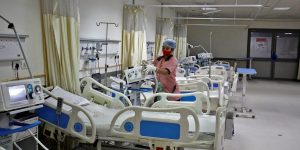Protecting Patients: Hospital Infections Drop, but Caution Still Required
As a healthcare advocate with a commitment to patient safety, I’m here to guide you through the topic of hospital-acquired infections. In this comprehensive article, we’ll explore the promising decline in such infections, while emphasizing the continued need for vigilance in healthcare settings. Join me in understanding the factors behind this positive trend, the significance of infection prevention protocols, and the roles of healthcare professionals and patients in ensuring a safe healthcare environment.
The Decline in Hospital Infections
Recent years have witnessed a significant reduction in hospital-acquired infections. This decline is a testament to the concerted efforts of healthcare facilities and professionals to prioritize patient safety. Several factors contribute to this positive trend, including:
- Improved Hygiene Practices: Healthcare facilities have heightened their focus on maintaining impeccable hygiene. Stringent hand-washing protocols, sterilization of equipment, and rigorous cleaning routines have all played pivotal roles in curbing infections.
- Enhanced Sterilization Methods: The development and implementation of advanced sterilization techniques have been instrumental. From surgical tools to patient rooms, these methods have greatly reduced the risk of infections.
- Focus on Infection Prevention: Infection prevention has become a central theme in healthcare settings. Comprehensive infection control programs have been established, emphasizing proactive measures to limit the spread of infections within hospitals.
The Importance of Infection Prevention Protocols
While the reduction in hospital infections is indeed commendable, it is important to recognize that the battle against infections is far from over. Infection prevention protocols remain critical to maintaining a safe and sterile healthcare environment. These protocols encompass a wide array of measures:
- Sterilization Procedures: Strict adherence to sterilization procedures for medical equipment and surfaces is non-negotiable. Regular training and audits help ensure compliance.
- Hand Hygiene: Hand hygiene practices are a cornerstone of infection prevention. Healthcare professionals are continually educated and monitored to maintain impeccable hand hygiene.
- Isolation Precautions: Patients with contagious conditions are isolated to prevent the spread of infections. Compliance with these precautions is vital.
- Vaccination: Healthcare workers are encouraged to receive necessary vaccinations to protect themselves and patients from preventable diseases.
The Role of Healthcare Professionals
Healthcare professionals play an indispensable role in the fight against hospital-acquired infections. Their dedication to hygiene, infection control, and patient safety is paramount. They are responsible for:
- Practicing Stringent Hygiene: Consistently practicing proper hand hygiene and following strict protocols for personal protective equipment.
- Monitoring and Reporting: Healthcare professionals are vigilant in monitoring for signs of infection and reporting potential outbreaks promptly.
- Education: Continuous education and training are essential to keep healthcare workers updated on the latest infection prevention strategies.
- Leading by Example: Leadership within healthcare settings sets the tone for the entire team. Leaders demonstrate the importance of infection prevention through their actions and commitment to safety.
Empowering Patients for Their Safety
Patients are not passive recipients of care in the battle against hospital infections. They, too, have a pivotal role to play in infection prevention. Empowering patients includes:
- Patient Advocacy: Patients should be encouraged to advocate for their own safety. They should feel comfortable asking questions, expressing concerns, and being actively engaged in their care.
- Infection Risk Awareness: Patients should have access to information about the potential risks of hospital-acquired infections. Awareness can prompt them to take precautions.
- Hand Hygiene: Patients and visitors should be educated about the importance of hand hygiene and should feel empowered to remind healthcare workers about handwashing.
- Active Participation: Encouraging patients to actively participate in their care plan can lead to safer healthcare interactions.
Caution Still Required
While the decline in hospital-acquired infections is promising, caution remains essential. Vigilance is a cornerstone of patient safety, and there are several reasons for ongoing caution:
- Challenges in Maintaining Low Infection Rates: Healthcare facilities must continuously adapt to evolving pathogens and potential outbreaks. This requires ongoing commitment and resources.
- Consequences of Complacency: Complacency can erode the progress made in infection prevention. A lapse in vigilance can result in outbreaks and harm to patients.
- Emerging Infections: New infectious threats constantly emerge. Healthcare facilities must remain prepared to address these challenges.
- Antibiotic Resistance: The rise of antibiotic-resistant bacteria is a pressing concern. Preventing infections is crucial to combat this global health issue.
Image by: https://thewire.in/
A Comparative Overview
To provide a comprehensive perspective on the topic, we’ve prepared a comparative table summarizing the key aspects and considerations related to the decline in hospital infections and the need for continued vigilance.
Table: Hospital Infections – Decline and Vigilance
| Aspect | Significance | Key Considerations |
|---|---|---|
| The Decline in Hospital Infections | Positive Trend | Improved hygiene and infection prevention |
| The Importance of Infection Prevention Protocols | Critical | Protocols to maintain a safe healthcare environment |
| The Role of Healthcare Professionals | Essential | Dedication to hygiene and infection control |
| Empowering Patients for Their Safety | Empowering | Patient advocacy and active participation |
| Caution Still Required | Ongoing Vigilance | Challenges in maintaining low infection rates |
Conclusion
The decline in hospital-acquired infections is a testament to the efforts of healthcare facilities and professionals in prioritizing patient safety. However, vigilance and commitment to infection prevention protocols must remain at the forefront of healthcare practices. Patients also have a role to play in ensuring their own safety. By understanding the factors behind reduced infections and recognizing the importance of ongoing caution, we can collectively protect patients and maintain the progress made in reducing hospital infections. Patient safety remains a shared responsibility that calls for continuous dedication and diligence in healthcare settings.











